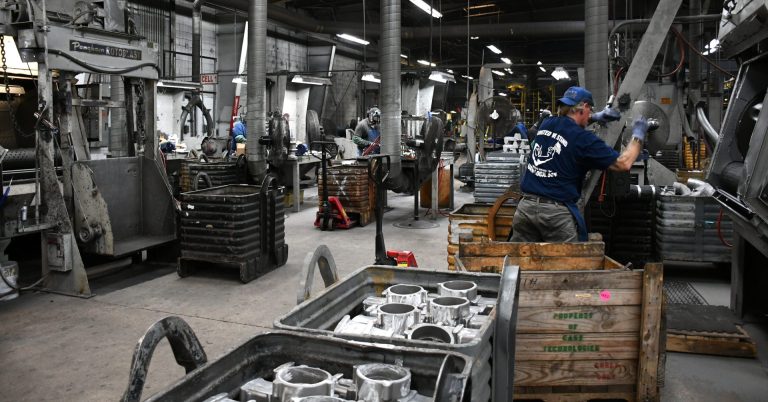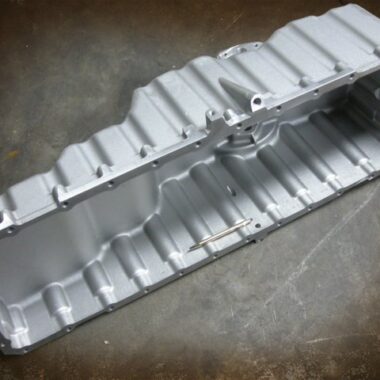Understanding the Art of Aluminum Spreading Services: Whatever You Required to Know
In the realm of production and engineering, light weight aluminum casting services stand as a critical method with a wide range of applications. From detailed automotive parts to aerospace parts, mastering the art of aluminum spreading needs a deep understanding of the procedure, products, and techniques included. As we look into the subtleties of this craft, discovering the ins and outs of aluminum spreading solutions reveals a world where accuracy, experience, and advancement merge to shape the future of numerous sectors.
Understanding Aluminum Casting Refine
When diving right into the realm of aluminum casting, an essential facet to understanding is the complex process associated with changing molten aluminum right into strong objects. The procedure starts with the melting of aluminum in a furnace at temperature levels going beyond 1200 ° F, turning it into a liquified state ready for spreading. When molten, the aluminum is put into a pre-designed mold cavity, which figures out the shape and characteristics of the last product. The liquified aluminum is delegated cool and strengthen within the mold, an essential action that dictates the quality and precision of the casting.

Advantages of Aluminum Spreading Services
Having gotten an understanding of the intricate aluminum casting process, it is important to now explore the considerable benefits offered by aluminum casting solutions. In addition, light weight aluminum spreading solutions are affordable due to the fairly reduced price of raw products and the efficiency of the casting procedure, resulting in reduced labor costs.
Aluminum spreading solutions provide high strength-to-weight proportions, making sure reputable and resilient end items. Generally, the benefits of light weight aluminum casting solutions make it a recommended option for many markets seeking high-quality, economical, and versatile production options.
Different Kinds Of Light Weight Aluminum Spreading

Die casting is an extremely efficient process that involves infusing liquified metal right into a steel mold and mildew under high stress. It is frequently utilized for automation of small to medium-sized get rid of exceptional surface area finish and dimensional accuracy. Sand spreading, on the other hand, is a more traditional approach where a pattern is utilized to create a dental caries in a sand mold and mildew, into which the liquified steel is poured.

Elements to Think About in Aluminum Spreading
For high-volume production runs, procedures like die casting or permanent mold and mildew spreading are frequently favored due to their capability to swiftly create huge quantities of parts. On the various other hand, for lower volume needs or prototypes, sand spreading or financial investment casting might be much more ideal site choices, as they use greater flexibility and reduced tooling costs.
Part intricacy is another important Home Page factor to think about when picking a light weight aluminum casting method. Elaborate get rid of intricate geometries might call for a more elaborate spreading procedure, such as shed wax spreading, to accurately recreate fine information. Less complex components, on the various other hand, can frequently be effectively created utilizing easier spreading approaches like sand spreading or pass away spreading.
Price factors to consider additionally play a significant role in the decision-making process. While die casting may offer high-speed production capabilities, it usually needs costly tooling, making it preferable for big manufacturing quantities where the tooling expenses can be amortized over lots of parts. Sand casting, on the other hand, may be an extra cost-effective alternative for smaller sized manufacturing runs because of its lower tooling expenses and flexibility.
Tips for Improving Aluminum Casting Abilities
Creating efficient light weight aluminum casting skills calls for a thorough understanding of casting strategies, product properties, and quality assurance procedures. To improve your aluminum spreading abilities, think about the following pointers:
Master the Essentials: Prior to attempting complex spreading jobs, ensure you have a strong grasp of essential casting methods. Exercise fundamental pours, mold and mildew preparation, and gating systems to build a solid foundation.
Understand Product Habits: Aluminum alloys show special homes throughout the casting procedure. Discover how various alloys behave under differing temperatures and pressures to optimize your spreading outcomes.
Purchase Quality Tools: High-quality devices and equipment can substantially impact the success of your spreading jobs. casting aluminum. Spend in precision mold and mildews, crucibles, and instruments to attain dependable and regular results
Continual Knowing: Keep updated on the current improvements in aluminum casting innovation and strategies. Attend workshops, seminars, and training programs to broaden your expertise and skills.
Conclusion
To conclude, understanding the art of aluminum casting solutions calls for an extensive understanding of the helpful site procedure, variables, advantages, and kinds included. By refining your abilities and taking notice of information, you can boost the quality and efficiency of your aluminum casting projects. casting aluminum. With practice and dedication, you can become skilled in aluminum casting and accomplish successful cause your projects
Having actually gained an understanding of the intricate aluminum spreading procedure, it is essential to now explore the substantial benefits used by aluminum casting services. In addition, light weight aluminum spreading services are cost-effective due to the relatively reduced price of raw products and the efficiency of the casting procedure, resulting in minimized labor expenses.
Investment spreading, additionally understood as lost-wax casting, is a precision casting method that can create detailed shapes with high accuracy. For high-volume manufacturing runs, procedures like die casting or irreversible mold and mildew casting are often favored due to their ability to swiftly create big amounts of components. Simpler components, on the other hand, can frequently be successfully created using less complex casting approaches like sand spreading or die spreading.
Comments on “Cutting-edge Approaches to Casting Aluminum: Stay Ahead”